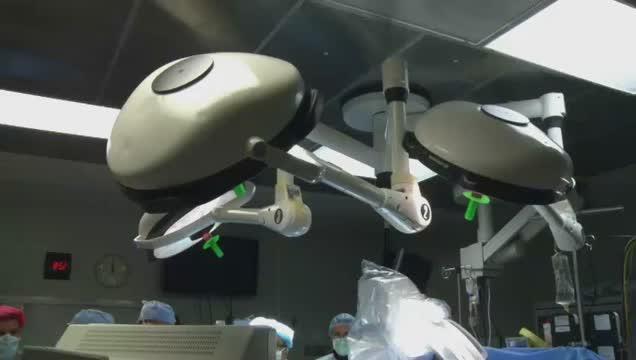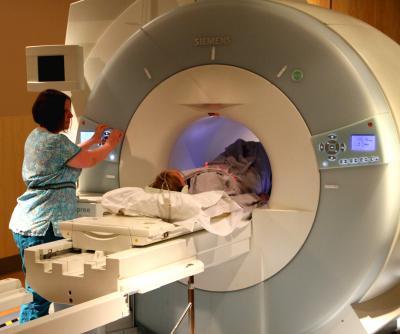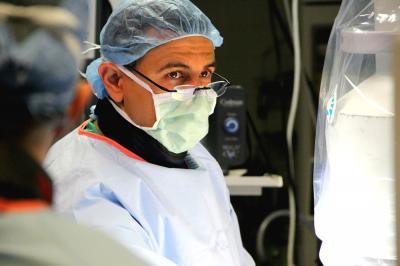Spinal stimulation to reduce neuropathic pain is a relatively new development and one that involves minor surgery to implant the device. It's by no means widely available, by no means universally successful and it remains to be seen if your standard insurances will cover it, so discussion with your doctor about the possibilities (if any) are essential. However, MRI's are pretty much standard assessment tools these days for a host of conditions, so producing a spinal stimulator that doesn't clash with an MRI investigation seems pretty much a no-brainer.
Ohio States's Wexner Medical Center implants 1 of first MRI-safe devices for pain
posted by news on august 6, 2013
MRI scans have become a diagnostic standard of care, allowing physicians to detect a wide range of health conditions by viewing highly detailed images using strong magnetic fields and radio frequency pulses to create images of structures in the body. Worldwide, it's estimated that 60 million MRI procedures are performed each year, including an estimated 32 million in the United States,
"MRI examinations are necessary and routinely performed for diagnosis and clinical care. It's very likely that a patient with chronic pain, spinal disease, neurological and orthopedic disorders will require an MRI scan," said Rezai, who is president of both the North American Neuromodulation Society and the Congress of Neurological Surgeons. "These spinal cord stimulators can help patients who suffer from extreme back, leg and extremity pain, especially those patients who have failed all previous medications and other approaches to get improvements in their pain and quality of life and functioning.
Ohio State neurologist Dr. John Kissel, a neuromuscular specialist, who has treated Garvin for almost two decades, said he suggested Garvin for the surgery because multiple medications were no longer helping to relieve foot and leg pain caused by his diabetic neuropathy.

Neurosurgeons at The Ohio State University Wexner Medical Center are among the first in the United States to successfully implant an MRI-safe spinal cord stimulator to help patients suffering from chronic back or limb pain. Neurosurgeons Dr. Ali Rezai and Dr. Milind Deogaonkar performed the surgery August 5, 2013 to help relieve intense foot pain due to a peripheral neuropathy in a 78-year-old patient.
(Photo Credit: The Ohio State University Wexner Medical Center)
"The stimulator will improve his life by reducing his pain, increasing his ability to do routine activities, and hopefully lowering his need for medications," Kissel said.
Garvin is looking forward to spending pain-free time playing with his grandchildren, walking his dog and attending Ohio State football games.
"This is a no brainer," Garvin said. "I wouldn't continue on with this pain for 10 minutes longer than I'd have to before I could have it put in. I know I'll feel stronger because I'll be able to do more things without pain."
Until now, patients with spinal cord stimulators couldn't receive full-body MRI scans due to concerns about the system being affected by the large magnetic fields and radio frequency energy involved in an MRI scan. The new device is designed with enhancements to reduce or eliminate the hazards produced by the MRI. The system includes a proprietary feature which sets the neurostimulator to an appropriate mode for the MRI environment, enabling radiology staff to easily and conveniently confirm a patient's implantable system is safe for MRI scanning.
"At Ohio State, we're happy to be one of the first in the country to be able to implant this device that allows our patients to receive MRI scans safely," Rezai said

A patient undergoes a MRI scan at The Ohio State University Wexner Medical Center. Worldwide, MRIs are performed once per second, every second of the day. A new MRI-safe spinal cord stimulator means patients with chronic pain now have new options in the treatment of their condition.
(Photo Credit: The Ohio State University Wexner Medical Center)

Doctors implant one of the first MRI-safe spinal stimulators in the United States, Aug. 5th, 2013 at The Ohio State University Wexner Medical Center. Spinal stimulators are used to treat chronic pain in the back and limbs and, until now, patients who got them could no longer get MRIs.
(Photo Credit: The Ohio State University Wexner Medical Center)
Source: Ohio State University Medical Center
http://www.sciencecodex.com/ohio_statess_wexner_medical_center_implants_1_of_first_mrisafe_devices_for_pain-117034
No comments:
Post a Comment
All comments welcome but advertising your own service or product will unfortunately result in your comment not being published.